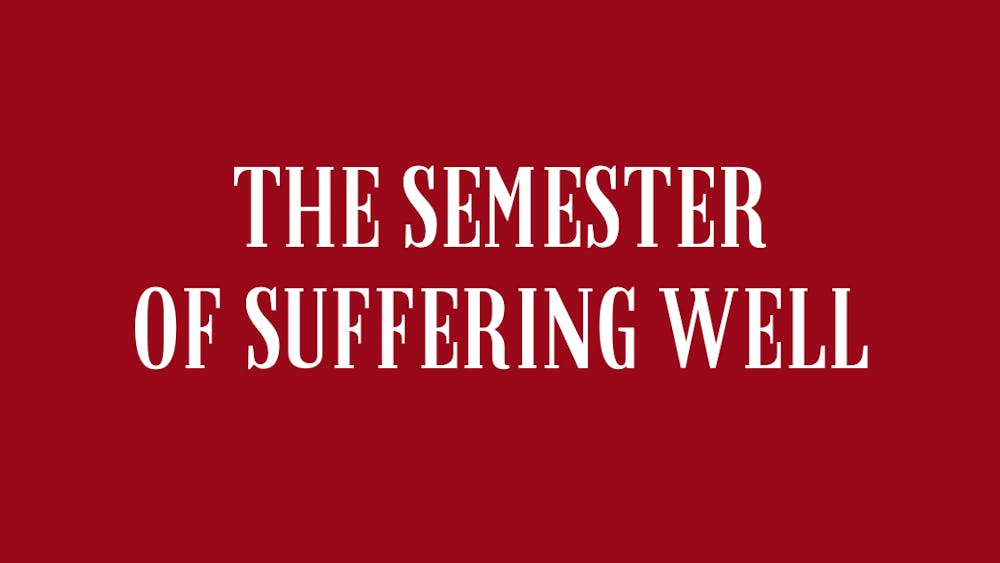Early in the fall semester, I discovered a passion for the work of American singer-songwriter Tom Lehrer. With sharp satire such as “So Long Mom (A Song for World War III)” and “I Wanna Go Back to Dixie,” Lehrer’s music never fails to put a smile on my face.
One in particular recently grabbed my attention. “New Math” lampoons the 1960s attempt to change American elementary school mathematics to more greatly emphasize advanced concepts such as modular arithmetic and non-decimal bases. To that end, the song follows Lehrer — who taught math at MIT before his musical career — as he subtracts 173 from 342, first using the traditional approach and then using New Math (in both base 10 and base 8!). At one point, using the new methods, Lehrer mistakenly subtracts seven from 13 and gets five. He is forced to sheepishly correct his error, saying, “but the idea’s the important thing.”
I think “New Math” is a funny song. But I was very interested in what happened when I showed it to a few of my fellow Alumni Dawgs — one an engineer, the other an accountant. After listening to and laughing along with Lehrer’s humor, one turned to me and said something along the lines of “Wait. Isn’t the second way he did it the way we do it now?”
I could do little but nod. It seems that what was once the New Math has become standard operating procedure in America’s classrooms. The “borrow and regroup” method portrayed as New Math is automatic for me; meanwhile, his more orthodox approach appears clunky and unnecessarily complex. (“Eight from four is six, carry the one?” Bizarre.)
With that in mind, let’s turn our attention to the latest revolution in math education — the Common Core. To quote its developers, the Common Core “is a set of high-quality academic standards in mathematics and English language arts.” Forty-four states have adopted these standards for use in their public schools, but their implementation has been controversial. A cursory search online brings up pages of anti-Common Core rhetoric, often drawing on plain-folks, down-on-the-farm sensationalism with titles such as “Arkansas Mother Obliterates Common Core in 4 Minutes!” Last year, Common Core opponents found a rallying point in comedian Louis C.K., who condemned the curriculum on Twitter and then complained on Letterman about his daughters’ experience with it.
I’ll admit that many of the concerns about the design and implementation of the Common Core standards are worthy of discussion. Here, however, I’d like to discuss the standards themselves — particularly, the mathematics standards. Many critics charge that Common Core replaces basic arithmetic skills, such as memorization of times tables, with greater emphasis on concepts and complex problem-solving strategies. In this respect, their grievance is not unlike Lehrer’s, who says that “in the new approach, the important thing is to understand what you’re doing, rather than to get the right answer.” Critics accuse this mindset of leading to a dumbing-down of American schoolchildren; in reality, however, the result is just the opposite.
When I left the world of middle-school pre-algebra for the exciting frontier of high school math, I was introduced to the concept of SWFC — “Show Work for Credit.” This principle, or some variant thereof, has appeared in every math, science and engineering course I’ve taken at Notre Dame. Intuitively knowing the answer — even the correct answer — earns you no credit, while you’ll still get 80-90 percent of points possible if you work through a detailed solution, then mess up at the end by declaring “two cubed equals six.” Can we not then view Common Core as an attempt to put our youngsters in this advanced, collegiate mindset?
We must also consider that rote memorization of arithmetic is far less important than it used to be. The Silicon Revolution has granted us calculators and computers that can perform these operations far faster and more accurately than any human. I’m not saying “two and two make four” belongs in the dustbin of math with the slide rules and trig tables. But if Common Core cuts the millionth repetition of a number sentence for a little more theory, I would shed few tears.
Finally, let’s remember that education, when given to a group, must necessarily cater to the least able members of the classroom. While the Common Core techniques might seem needlessly complex to a student with natural mathematical talent, their promise of systematic solution algorithms may be a lifesaver for those children just scraping by.
At present, Common Core is far from perfect, but I wouldn’t be surprised if it’s here to stay. Perhaps one day, our children will stare at us in bewilderment as we attempt to explain the old methods — “You can’t take three from two/Two is less than three/So you look at the four in the tens place …”













